Marymount’s Veteran Faculty: Social Justice Warriors
December 15, 2017
Some people stereotype veterans by thinking of them only in their role serving on the battlefield. I found myself guilty of conforming to this stereotype until I interviewed two teachers at my school who are both veterans of the Air Force. Through their service as a medic and meteorologist, both Ms. Brasda and Mr. Eadon used their experience with the military as an outlet for social justice.
Ms. Sandra Brasda, who teaches United States History and AP Gov, decided to enlist in the Air Force following the September 11th attack in 2001 when she was a senior in high school. She made the choice to enlist immediately after high school because “after 9/11, [her] life turned upside down and nothing that mattered prior to this event mattered anymore.” She felt that it was “[her] responsibility to do something, and she couldn’t just sit and watch.” Ms. Brasda added that she did not feel upset while all of her friends were away at college and she was in the Air Force because she wanted to be a part of something, and “knew that this was something she wanted to do.” While all of her friends were beginning college, Ms. Brasda joined the Air Force.
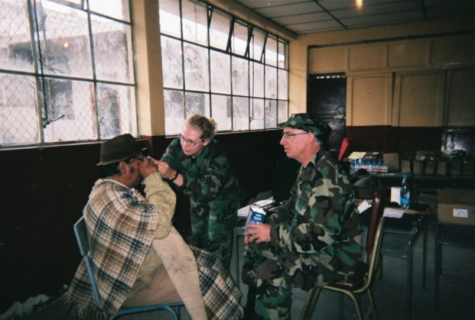
Ms. Brasda was an optometry technician and a medic in the Air Force. As an optometry technician, she “assisted the eye doctor in surgeries, [performed] eye exams, gave out glasses, and physicals.” She chose a career as a medic because she wanted to use the military to “fix people, [not] to hurt people.” Ms. Brasda was still in high school when she enlisted in the Air Force, and the medic training enabled her to do school and training simultaneously.
In her 6 years of service, Ms. Brasda traveled to Ecuador and hurricane Katrina to “fix people.” She noted that her most memorable experience in the army was in Ecuador during a “humanitarian mission, [where she] provided free health care for the indigenous people [of Ecuador].” Ms. Brasda’s face lit up as she recalled giving a 10 year old Ecuadorian the gift of sight.
“I know this is going to sound so corny, but I literally gave people sight. There was this one ten year old girl, her name was Stephanie, who had a minus 14 prescription, which is actually technically blind. All she could see was light and movement…I gave her the first pair of glasses that she ever had in her life, so I literally gave her sight. To be able to help someone out that way – that was very moving. My time in Ecuador was very, very powerful because I was [a] part of something bigger than myself. I was [a] part of something bigger than the United States, I was [a] part of this fabric of humanity of helping people and that was just a very powerful event.”
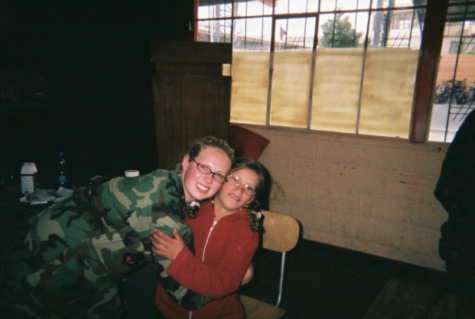
Rather than using the military to kill people, Ms. Brasda found the military as her source to heal people. It is important for us all to recognize that the military has so much more than fighting combat, and dying for our country. Ms. Brasda is a perfect example that the military offers many outlets to fight for what you believe in.
Colonel Edward Eadon, who teaches physics, joined the Air Force immediately after he graduated college in the early 1970s. Mr. Eadon explained that his education was funded by the “ROTC, a program at colleges in which you can get scholarships, so the Air Force paid for all of [his] education”. He decided to join the Air Force because his father was an USAF warrant Officer.
The counterculture movement arose in the 1970s, beginning the trend of progressive college campuses and students who demanded radical change in the government. Young men and women held protests demonstrating resistance against the Vietnam war, including Mr. Eadon.
Mr. Eadon expressed that “[he] was a strong supporter of the anti-war movement because it was clearly a civil war [that] we should not have been involved in.” Mr. Eadon was regularly protesting against the Vietnam War and had decided that he “was not going to continue” his training, and “was going to quit.”When Mr. Eadon shared this news with his father, his father asked him: “do you want the military of these United States be full of people who want to go to war and kill people? Or do you want to have diverse opinions?” His father emphasized that “[he could] bring diverse opinion, and our military should reflect our society”. Mr. Eadon told me that he could not fight his father’s argument, and proceeded to train.
“I felt conflicted a little bit..Was I being a hypocrite? Or was I really going to stand up and speak my mind? I always felt that my presentation was based on logic, so I didn’t hesitate to give my opinions.”
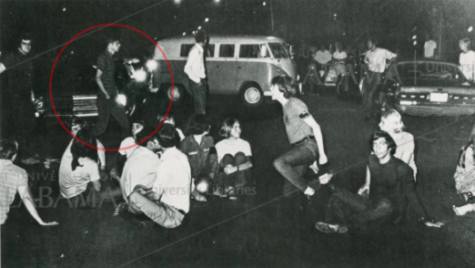
Here is a photo Mr. Eadon sent me from his 1970-71 yearbook. He recalls, “We were protesting the crackdown on student anti war protests at campuses around the country that led to Kent State & Jackson State where student antiwar protesters were killed. I am in the lower image, I am the second guy from the left, walking, dark tshirt, hands in pockets in front of car driver side headlight–we were blocking traffic.” {University of Alabama Yearbook 1970-1971}
Mr. Eadon’s career in the Air Force began after a year out of uniform at San Jose State University studying meteorology. He was first assigned to a base in Fort Knox, Kentucky as a Chief forecaster during the “super outbreak of tornadoes in the early 1970s.” After that, Mr. Eadon went to graduate school to study astrogeophysics. Once Mr. Eadon graduated, he was sent to the headquarters of Air Weather Service, located outside of St. Louis, Missouri. Then, Mr. Eadon was sent to Professional Military education and “off to run a solar radio observatory just North of Boston.” Mr. Eadon also went to Korea, had 2 jobs at the Pentagon, and ended with a tour in Virginia. He retired as a Colonel in 1997 after serving the Air Force for 25 years.
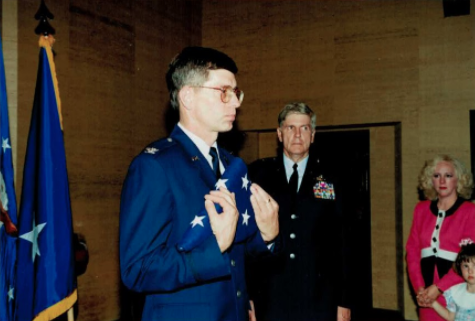
Although he felt conflicted to join the same military that he was completely against, he listened to his father’s advice, and contributed a diverse opinion to the Air Force. Though, Mr. Eadon had a very different opinion from others in the military at this time, he was not alone. Mr. Eadon explained that even the helicopter pilots stationed in Vietnam seemed to disagree with the war they were fighting in. Mr Eadon recalls:
“When I was at Fort Knox, helicopter pilots who were in the thick of it would be coming back from Vietnam, and I would be giving them weather forecasts, and it was clear that they themselves knew that this was..we were trying to get the message across to the leaders of the country that this is the wrong thing to do. And the top military leaders were all doing the wrong thing, saying we could continue to win this war. And over time both the military and business came to realize that the people at the lowest level have really important things to say.”
Despite Mr. Eadon’s initial uncertainty of joining a military he was previously against, he admitted that he “absolutely enjoyed his experience in the Air Force.” He explained that he was able to eventually support the military because it was “mission driven”, which is the same reason he was “attracted to Marymount.”
“If it has a good mission, protecting our country, freedom and our citizens , it is just a calling. It’s a mission that I could support….Just like [I was] attracted to Marymount: because of [its] mission and the historical foundations. [I was attracted to the] foundation impulse of Marymount to balance out other elite schools for girls that would not allow Catholics or Jewish girls into it. When I heard that story..when I heard the story of [Marymount’s] goal of really setting the foundation for future leaders of this country, I jumped at the opportunity to teach here, even though I had no plans to retire from teaching.”
At the end of both interviews, I thanked Ms. Brasda and Mr. Eadon for their service to our country. Although these interviews were separate, both teachers had the same reaction: humbly chuckling, they each told me that they don’t know what to say when one thanks them for their service. This ultimately comes back to the stereotype I have found many to be guilty of – most of us commonly recognize service as those who fight combat. But at the end of the day, not all heroes wear capes.








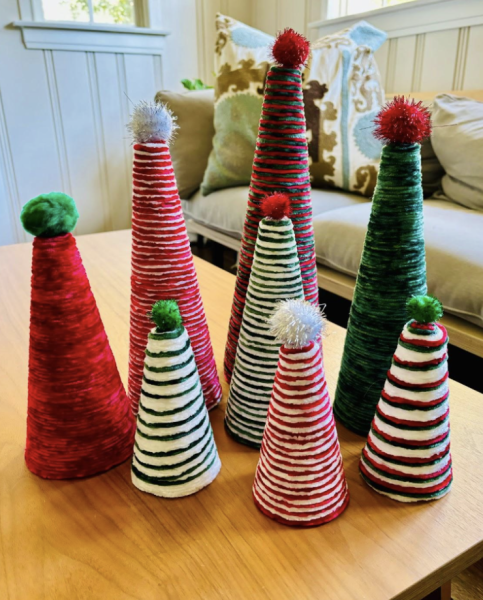




Debra Miller • Dec 28, 2017 at 12:23 pm
I wrote a long response, which has dissappeared and leaves me feeling furious. Either it sent itself, which is what I hoped happened or it erased, which makes me want to cry.
I will rewrite this to Sarah:
This is the best written, most interesting piece I’ve ever read in the Anchor.